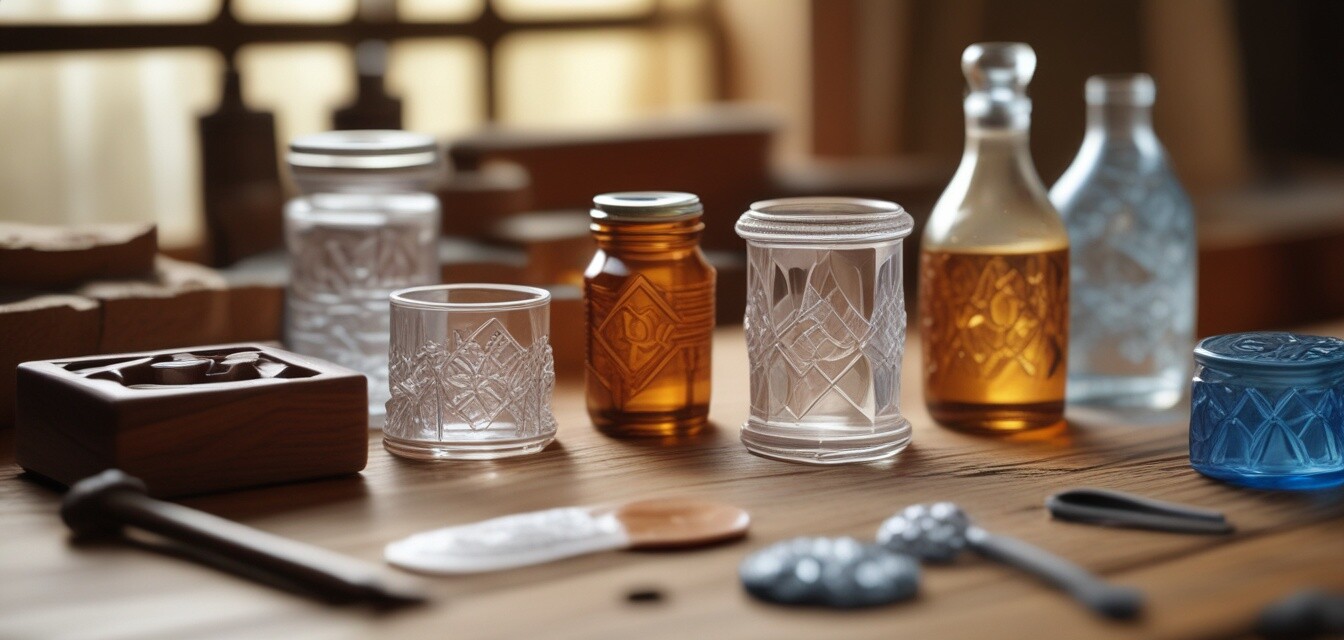
How to Repair and Maintain Your Glass Molds
Key Takeaways
- Proper maintenance can extend the lifespan of your glass molds.
- Repair techniques vary based on the type of damage.
- Regular cleaning is essential to maintain mold quality.
- Using the right materials can enhance your repair process.
- Keep your molds in an appropriate environment to avoid damage.
Working with glass molds is an exciting part of the glass-making process. However, just like any tool, they require care and maintenance to stay in optimal condition. In this guide, we will explore effective tips and techniques for repairing and maintaining your glass molds to ensure they last for many creative projects. A well-maintained mold not only improves the quality of your glass art but also enhances your overall crafting experience.
Understanding the Importance of Mold Maintenance
Glass molds are vital tools for creating unique shapes and designs in your glasswork. Over time, molds can experience wear and tear, which can affect the final product. Here are a few reasons why maintaining your molds is essential:
- Quality of work: A well-maintained mold ensures a smoother finish and better detail in your glass creations.
- Cost-effective: Regular maintenance can save you from expensive repairs or replacements.
- Enhanced creativity: Knowing how to repair and maintain your molds allows for greater experimentation with techniques and projects.
Common Types of Damage to Glass Molds
Understanding the common types of damage can help you identify issues early on and perform necessary repairs. Here are the most frequent problems:
| Type of Damage | Description |
|---|---|
| Chips | Small pieces missing from the mold edge which may affect the glass’s shape. |
| Crazing | Fine cracks on the mold surface that could lead to breakage over time. |
| Rust | Surface deterioration caused by moisture that can compromise the mold's integrity. |
| Warping | Distortion of the mold shape, which can occur from extreme temperatures. |
Repair Techniques for Glass Molds
Repairing your glass molds might seem daunting, but with the right techniques, you can restore them effectively. Here are methods for the common types of damage:
Chips
To repair chips, use epoxy or a specialized mold repair material. Follow these steps:
- Clean the area around the chip with warm soapy water and let it dry completely.
- Mix the epoxy according to the manufacturer's instructions.
- Apply the epoxy to the chipped area, smoothing it out to match the mold's contour.
- Allow it to cure fully before using the mold again.
Crazing
For crazed molds, a gentle sanding may help. Follow these steps:
- Use fine-grit sandpaper to lightly sand the crazed area.
- Wipe with a damp cloth to remove dust.
- Apply a newly formulated mold release compound to protect against future crazing.
Rust
Remove rust using the following method:
- Create a paste using baking soda and water.
- Apply the paste to the rusted area and scrub gently with a soft cloth.
- Rinse thoroughly and dry to prevent moisture retention.
Warping
Addressing warping can be tricky. Here’s what you can do:
- Inspect for any signs of flexibility in the mold.
- For minor warping, try maintaining consistent firing temperatures in your kiln.
- If severe, consider re-casting the mold or purchasing a replacement.
Regular Maintenance Tips
In addition to repairing damage, regularly maintaining your glass molds will prevent issues from developing. Here are some essential tips:
Regular Cleaning
Always clean your molds after use. Avoid abrasive cleaners, and instead:
- Use warm soapy water and a soft sponge.
- Rinse well and dry immediately to avoid moisture buildup.
Proper Storage
Storing molds correctly is key to preventing damage:
- Keep molds in a dry environment to avoid rust.
- Store them in a padded case to avoid chips and scratches.
- Stack molds carefully, placing lighter molds on top.
Using Mold Release
Applying a mold release every time you use your molds helps prevent sticking and reduces wear:
- Select a suitable mold release spray or liquid.
- Apply evenly as per instructions before every use.
Conclusion
Maintaining and repairing your glass molds is essential for creating quality glass art. By understanding the common types of damage, employing appropriate repair techniques, and adhering to proper upkeep, you can extend the life of your molds significantly. With the right care, your molds will remain as perfect tools for your creative glass projects for years to come.
For more information on the various aspects of glass molds, check out our Glass Molds blog section. Explore our categories like Glass Kilns or Fusing and Slumping Supplies for the best deals on glass-making equipment.

